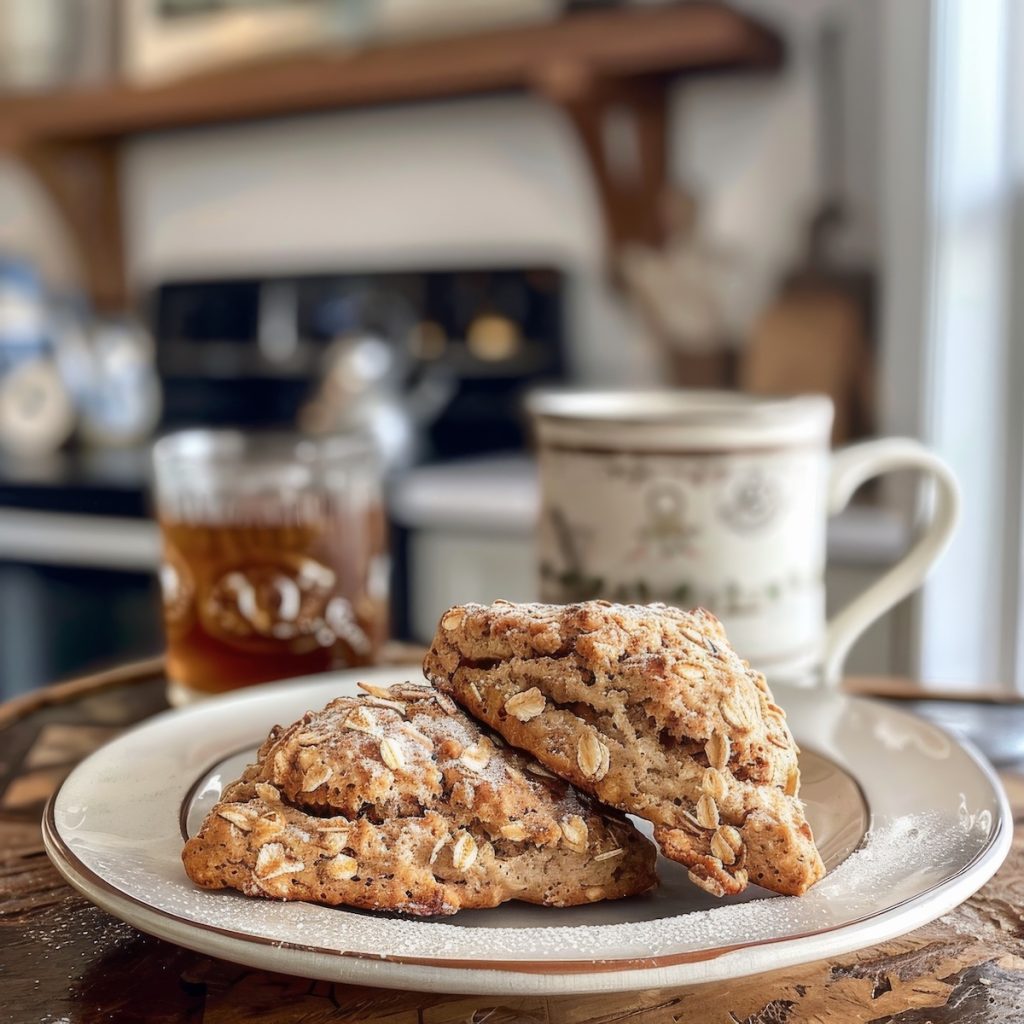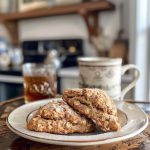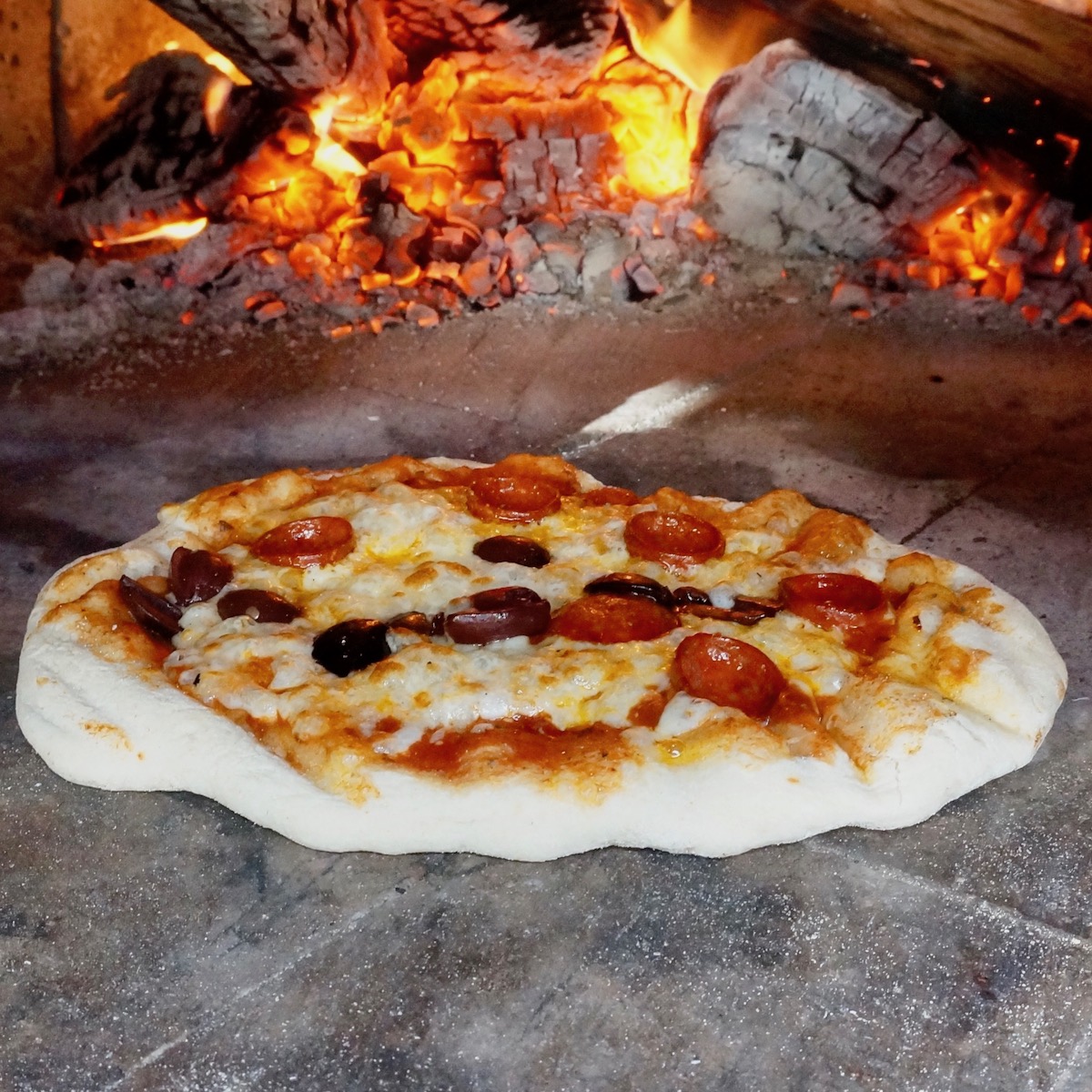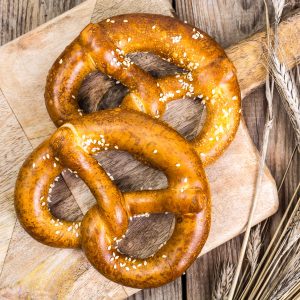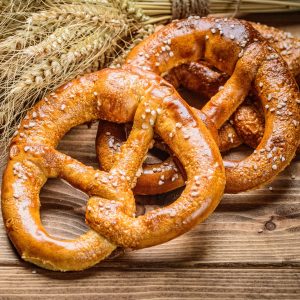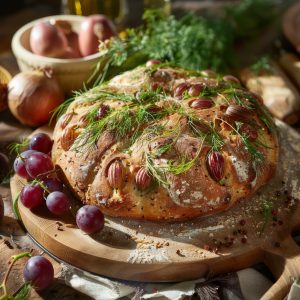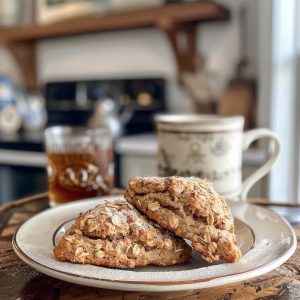Deliciously Simple: Mastering the Basics of Scone Baking
Delightfully fluffy and crumbly, these classic scones are a testament to simplicity and taste. Perfect for a leisurely breakfast or an elegant afternoon tea, they embody the essence of traditional baking. The key lies in achieving the ideal balance of tender texture and buttery richness, making each bite a moment of pure indulgence.
Crafted with basic pantry staples and a touch of finesse, these scones quickly mix and disappear from the table. Whether enjoyed warm from the oven with a dollop of clotted cream and homemade jam or savored with a fragrant cup of tea, they promise to fill the air with their comforting aroma, elevating any occasion with their homely charm.
Join me in rediscovering the joy of baking with this straightforward yet irresistible recipe. With simple ingredients and easy steps, let’s turn them into something truly special, inviting everyone to gather and savor the warmth of freshly baked goodness.
History
Scones’ history dates back to Scotland in the early 1500s, where they originated as a type of unleavened bread baked on a griddle. The name “scone” likely comes from the Dutch word “schoonbrot,” meaning fine bread or beautiful bread. Over time, they evolved into the oven-baked, sweet, or savory treats we recognize today.
Initially, scones were made with oats and shaped into rounds, then cut into wedges for serving. They were cooked on a griddle over an open fire, giving them a crisp exterior and a dense, doughy interior. As baking powder became more widely available in the 19th century, scones began to be made with wheat flour and leavened, resulting in the lighter, fluffier texture we associate with modern scones. This evolution is a testament to the ingenuity and adaptability of baking traditions.
Scones gained popularity across the United Kingdom and Ireland. They were often served with butter, clotted cream, or jam as part of afternoon tea. Eventually, they spread to other parts of the world, adapting to local tastes and ingredients.
Today, scones remain a beloved baked good enjoyed for their versatility and comforting taste, whether served plain or embellished with fruits, nuts, or other flavorings.
What Country Consumes the Most Scones?
The United Kingdom is traditionally known for consuming the most scones. Scones are a quintessential part of British cuisine, especially popular in England, Scotland, Wales, and Northern Ireland. They are often enjoyed as part of afternoon tea, a longstanding British tradition. Scones in the UK come in various forms, from plain or fruit-filled scones served with clotted cream and jam to savory versions with cheese or herbs.
While the UK leads in scone consumption, scones have also gained popularity in other English-speaking countries like Australia, New Zealand, Canada, and the United States, where they are commonly served in cafes, tearooms, and bakeries. Variations in recipes and serving styles reflect regional preferences, but the tradition of enjoying scones with tea remains a common thread across these countries.
Most Popular Flavored Scones
The most popular flavors for scones vary depending on regional preferences and seasonal availability of ingredients. However, some of the universally loved flavors include:
- Plain: Classic scones made with flour, butter, sugar, and milk or cream, often served with clotted cream and jam.
- Fruit: Studded with dried fruits such as raisins, currants, or sultanas. These are commonly enjoyed with butter or clotted cream.
- Cheese: Savory scones made with grated cheese (like cheddar), herbs (such as chives or thyme), and sometimes a hint of mustard or paprika.
- Chocolate: These incorporate chocolate chips or chunks, providing a sweet twist on the traditional recipe.
- Herb: Savory scones flavored with fresh or dried herbs like rosemary, thyme, or basil. These are often served with butter or cream cheese.
- Citrus: It is infused with citrus zest (lemon, orange) for a refreshing flavor, sometimes complemented with a citrus glaze.
- Pumpkin or Sweet Potato: Made with pumpkin puree or sweet potato add a moist texture and subtle sweetness.
These flavors highlight the versatility of scones. They cater to sweet and savory preferences, making them suitable for various occasions, from breakfast to afternoon tea or even as a snack.
Homemade Oatmeal Scones Recipe
Ingredients
- 1½ cups all-purpose flour
- ¼ cup granulated white sugar
- 1 tablespoon baking powder
- 1 teaspoon cream of tartar
- ½ teaspoon salt
- ½ cup unsalted butter cut into small pieces
- 1¼ cups old-fashioned oats
- 1 cup dried raisins or dried cranberries
- 1 large egg
- ⅓ cup milk
For the Topping
- 1 tablespoon milk
- 2 tablespoons granulated white sugar
Instructions
- Preheat oven to 375° F, grease a baking sheet.
- In an ample bowel, mix flour, sugar, baking powder, cream of tartar and salt. With a pastry blender (Or fork if you want to feel pain) cut in the butter until the mixture looks like bread crumbs.
- Stir in oats and dried fruit.
- Make a well in center.
- In a small bowl or cup, mix egg and milk, and pour into the well you made in the dry ingredients. With a fork (which you happen to have nearby because you don’t have a pastry blender), stir wet ingredients into the dry ingredients, until everything is evenly moistened and comes together in a ball. But don’t over handle or it makes the scones tough. The dough should be soft and crumbly.
- Pat the dough out on a lightly floured board to form an 8-inch circle.
- Transfer to the greased baking sheet.
- Cut dough into 8 wedges with a lightly floured knife, or just use a pizza cutter.
Topping and Finish
- Brush wedges with the milk and then sprinkle with sugar. (I just realized I mixed the sugar and milk together and spread them on the wedges. It tasted fine that way.)
- Bake at 375° F for 22 to 25 minutes, until golden brown.

